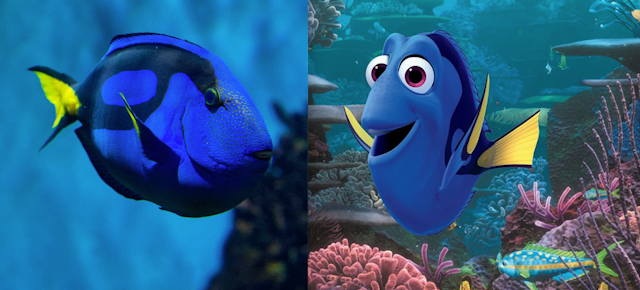If a piece of information is repeated often enough, it will eventually be believed, even if there is no evidence for it. One example of this features the friendly clownfish Nemo and his side-kick Dory, a blue tang fish, who you may know from the animated blockbusters Finding Nemo and Finding Dory.
Everyone loves Nemo. But to some, his rise to global stardom in 2003 had a darker side, as news outlets around the world reported that the popularity of the movie was leading an increasing number of people to buy clownfish as pets. These articles claimed that this increase in demand was a threat to wild populations. While there was little to no evidence to support this story, with so much repetition, the so-called Nemo Effect became conventional wisdom.
So it wasn’t surprising that before its sequel, Finding Dory, was released in 2016, a chorus of voices, including Ellen DeGeneres who voices Dory in the movie, once again raised the alarm. The calls were, however, dwarfed by the more than 50m spectators who watched the movie in the US alone. Could there be a Dory Effect?
Dory is a blue tang, a species found across much of the Indian and Pacific Oceans. Despite its popularity as an aquarium fish, it’s currently not considered to be threatened. Still, increased sales could constitute a threat to wild populations since, in contrast with clownfish which are often bred specially for the trade, blue tangs cannot be reared in captivity and there are no alternatives to wild-caught fish.

To find out if there had been a Dory Effect, my co-authors and I compared how sales of blue tang fish changed over time, as compared to other species of the same family that are also traded as pets. Our results are now published in the journal Ambio.
We found no link between the release of the movie and the number of fish imported into the US, where many of the viewers were located. This is to some extent not surprising as blue tang are large and hard to keep, and so not particularly suitable for first-time fish enthusiasts.
So what other things could movie goers do as a result of watching Finding Dory? There is some evidence that animated blockbusters can influence people to visit these and other ornamental fish at an aquarium. We looked at visitor numbers over time at 20 US aquariums to see if there had been any changes associated with the release of the movie. Again, we did not find any effect.

We then turned to an indicator that related to a less expensive and time-consuming behaviour, the act of searching online, in particular, searching on Google for different ornamental fish species. We again compared the blue tang fish with other ornamental fish of the same family. This time, things were different.
We found a sharp rise in the frequency of Google searches for the scientific name of the blue tang: Paracanthurus hepatus. This showed that while Dory fans were not willing to invest time and money to buy pet fish or visit an aquarium, they were indeed willing to search online for information about the species, an act involving little investment in money or time.
Our results show that contrary to what was previously widely reported, the movie Finding Dory was not responsible for an increase in demand for the blue tang fish, but it did encourage people to seek more information about the species. It seems blockbusters can play an important role in putting a more diverse group of species in the public’s mind. This is key for conservation as we know that the least familiar species are less often perceived to be worthy of conservation support.
Finally, these findings also highlight how we need better links between the press and the scientific community, to ensure that stories based on anecdotal evidence such as this do not gain unwarranted momentum and end up shaping public opinion and even public policy.
There are several similar stories to this one out there. For example, there are reports of the Harry Potter movies driving demand for pet owls or the movie Zootopia leading to a spike in the demand for pet Fennec foxes, despite no evidence to support them.
Scientists and journalists need to find better ways of working together to ensure more factual coverage. In the era where experts are sometimes seen as irrelevant and fake news plagues our media streams, this improved relationship will be vital to demonstrate the value of both groups to society.

